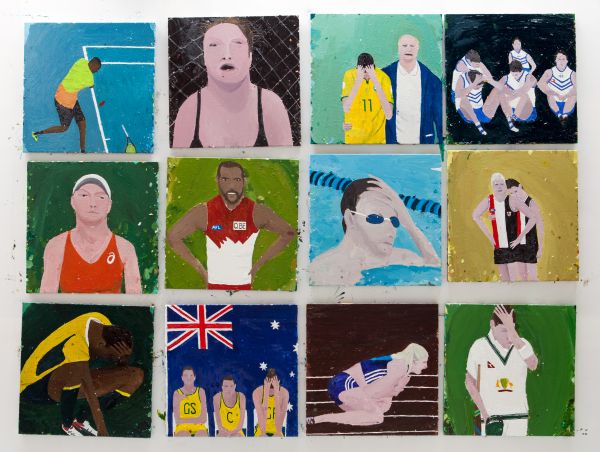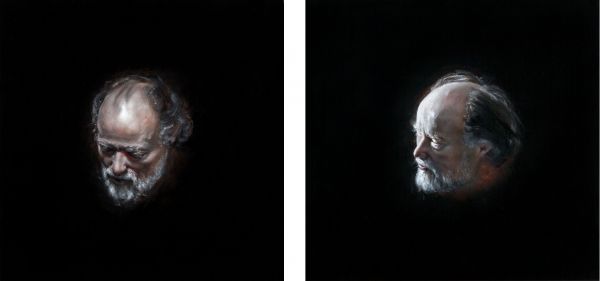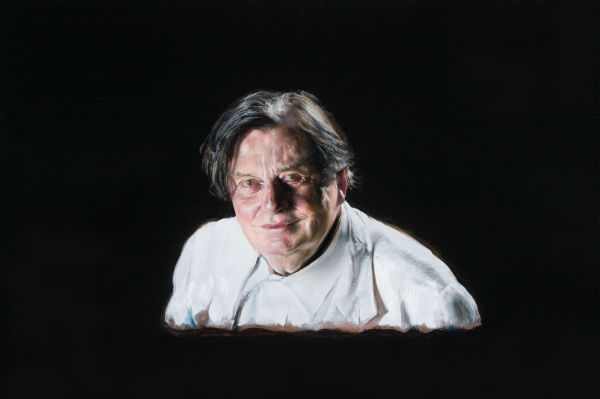Prize fighters: how to make art in a world of winners and losers
By Fiona Gruber
As media attention turns to the 2017 Archibald, Wynne and Sulman Prizes, we can be sure of controversy, but does competition culture get the best out of artists?
Australia is a country obsessed with winners, in art as much as in any other field.
The Archibald, the Moran, the Wynne, the Sulman, the Blake, the Lemprière, the Portia Geach, the Waterhouse, are a few of the better-known prizes; but there are dozens more, large and small, dedicated to portraits, landscapes, science, nature, religion, nudes, painting, sculpture, photography, everything combined or in-between, artists under 40, over 50, women only, specifically Indigenous. It’s a glorious world if you win one, a shrug, or possibly a week in bed wracked by heaving sobs, if you don’t.
Some prizes, such as the Archibald (28 July–22 October 2017), are fawned over by the media, others barely make the local paper. The Archibald has also attracted more controversy than all other prizes combined, but more of that later.
The very idea of a prize for art makes many of us shudder. It’s not a foot race, we snarl; how can you apply a winner-loser framework in a field where subjectivity and personal taste are ubiquitous?
And the final decision is frequently compromised when judges’ opinions are fiercely divided.
There’s plenty of passionate debate behind the scenes, none of which we’re necessarily privy to, explains Victorian College of the Arts alumnus and current staff member Richard Lewer when I talk to him for this article. Melbourne-based Lewer won the Basil Sellers Art Prize in 2016, and is one of seven artists with a VCA connection in the running for this year's Archibald.

“Did the judges have a good night’s sleep, a strong coffee that morning?” he says. “You never know. I wanted a score card when I won the Basil Sellers but I never got feedback.”
Founded in 2008 by Sellers, a businessman and philanthropist, and based at the University of Melbourne’s Ian Potter Museum of Art, the prize, which asks artists to engage with the theme of sport, combines Sellers’ two loves.
Lewer had entered the prize four times without success until winning last year with The Theatre of Sports, which depicts a grid of athletes in moments of anguish. It turned out to be his and other artists’ last chance to compete: the prize is in abeyance until a new sponsor can be found, as Sellers had committed to funding it for only ten years.
For Lewer, who also won the Blake Prize for Religious Art in 2014, the Basil Sellers win was particularly sweet, given he’s been committed to sport for many years as a boxing coach. He says he advises artists, especially young artists, to avoid concentrating on the reward and to view competing for art prizes as “a weird activity that it’s good to participate in”, part of the marketing and publicity arm of their practice.
“I tell them it’s a good way to be seen, especially if you want representation,” he says. Having your work included in a catalogue is good for the resumé, he says, but it’s equally important to not get hung up on entering as it can mess with your practice. “Only do it if your work fits into the prize.”
The $100,000 (taxable) prize money from the Basil Sellers win allowed Lewer to build a studio in his back yard, the first of his studio spaces to actually have heating. “It’s like living the dream,” he says.
That’s a sentiment echoed by VCA graduate Louise Hearman, who won the Doug Moran National Portrait Prize in 2015 with a portrait of her partner, photographer Bill Henson.

"When you’re an established artist, you might like the prestige, but otherwise you enter prizes for the money", she says. “I was stony broke, the Moran was worth $150,000, and I thought, ‘Go for it’.”
“I’m living proof that money brings happiness”, she adds.
Of course, winning also brings recognition. As was the case last year when Hearman won the $100,000 Archibald Prize with her portrait of satirist Barry Humphries.
“You get publicity, and people see you as a more ‘official’ artist, it gets you into the mainstream,” says Hearman. Since winning, galleries have raised the price of her work, but the rush of commissions that followed her success goes against her way of conceiving and making work. “Commissions kill my soul,” she explains. “I don’t want to be tied to a finished product.”

Many artists have their own pecking order when it comes to which prizes carry the most integrity, but for many non-artists, the only prize they’ve heard of is the Archibald. As the excitement about this year’s crop of works builds, we can all expect to hear, once again, complaints about the prize’s reliance on “celebrity” portraits, or that the dumbed-down media coverage gives the prize a show-pony, gossip-mag feel.
But, says Angus Trumble, director of the National Portrait Gallery in Canberra, as one of the oldest continuous prizes in the country, the Archibald is a fascinating study of changing trends.
Founded by newspaperman J.F. Archibald in 1921, it’s administered by the Art Gallery of New South Wales. The prize and exhibition program underwrites the gallery’s public events in any given year, says Trumble. “It’s hugely lucrative, very popular and an essential plank of the program."
It’s also, as mentioned above, controversial. For its first 25 years the number of Archibald-winning artists was so small they could have shared a taxi: W.B. McInnes won it for the first four years and got the gong a further three times; John Longstaff had five wins; Ivor Hele had four, and William Dargie seven.
The most famous dispute was over William Dobell’s 1943 portrait of fellow artist Joshua Smith, which culminated in a highly-publicised court case, in which the gallery and Dobell faced a lawsuit challenging the awarding of prize money to Dobell, given the portrait – seen as more caricature than faithful likeness – didn’t meet the conditions of the prize.
Other stirs include Brett Whiteley’s winning autobiographical works in 1976 and 78 and his portrait of Australian novelist Patrick White, which angered the Nobel-Prize-winning author, whose list of “likes and dislikes” appeared in the painting without his blessing.
Then there was John Bloomfield’s 1975 portrait of filmmaker Tim Burstall which was disqualified when it was discovered to have been painted from a photograph, a stricture unthinkable today.
More recently, in 2004, artist Tony Johansen sued the trustees of the AGNSW over the fact that Craig Ruddy’s portrait of actor David Gulpilil was a drawing not a painting as stipulated by the prize’s terms and conditions. Johansen lost.
The furores and media excitement mask the fact that, at the end of each competition, all works that have not been bought have to be collected by the artists. In reality that means the vast majority of the portraits, because the size and subject matter mean they are rarely bought by the sitter or private individuals. A few may be bought by public institutions, but not many. In the past 30 years, the AGNSW has only acquired four entries. That’s tens of thousands of painting that have had to return to artists over the years.
“There are large, useless portraits hanging around in people’s studios,” says VCA alumna Kristin Headlam, who won the Doug Moran National Portrait Prize in 2000 for her painting Self-portrait in Bed with the Animals. “These are portraits of celebrities who are probably not that well-known to the artist, and nobody else wants them.”

Trumble concurs. The National Portrait Gallery was built to house portraits of modest size, he says, so the “huge dimensions” of the Archibald and other prize portraits are a challenge.
The Archibald might continue to steal the most oxygen, but all prizes have the capacity to distort. Whatever the genre and medium, prize culture and its attendant cachet can have a damaging effect on artists’ practices, on public perceptions of art, and gallerists’ decisions on who to represent.
Trumble says that for all the attention it brings to art, he’s very weary of prize culture. “It imposes on artists an artificial obligation to compete, which in the absence of a prize culture wouldn’t exist.”
“Naturally ambitious and competitive individuals rise to the challenge. But what happens to the self-regard and self-confidence of fine artists who feel compelled to enter but fail to win?”

Lewer says it’s vital to stay balanced and philosophical. Prizes can create opportunities, but an artist's life and practice should continue as normal. “The public might think winning a major prize changes you totally. But it’s a pat on the back. You get nice texts, you’re popular for a day, then it’s back to reality.”
Banner image: Louise Hearman, Barry (2016), Winner 2016 Archibald Prize. Image courtesy of the artist.
Further reading: VCA student reaches the 2017 Archibald Prize finals.